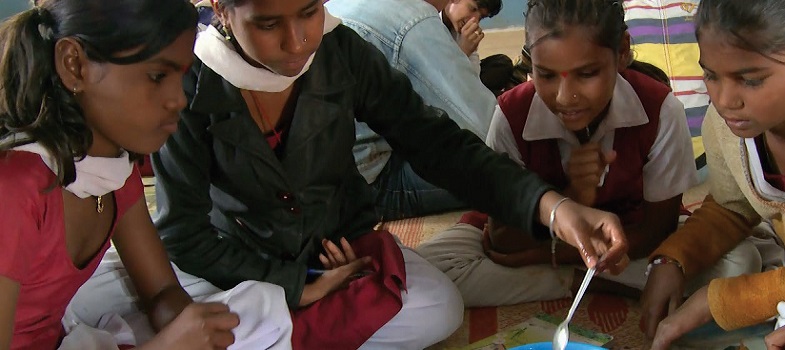2 Technique: solving problems
A good way to encourage your students to talk about science is to ask them to give explanations for their answers to problems, using questions that start with ‘why’ or ‘how’ rather than ‘what’. For example, instead of asking them a closed question such as ‘What type of chemical reaction is this?’, you could ask: ‘Why is this reaction classified as a double decomposition reaction?’ The answer that they give will be longer and will tell you whether they have developed the skills and knowledge to classify reactions.
Working on solving problems in pairs is a good way for students to improve their thinking skills. By talking about the problem, they will develop their reasoning skills and gain confidence. It is easy for teachers to focus on whether a student has got the answer right or wrong, but it is important to pay attention to their thinking and reasoning. If students understand why a particular solution is correct, they are more likely to be able to apply their reasoning to new situations. This is difficult in a large class, but by using pair work you can give your students the opportunity to talk about their reasoning and develop these higher order skills.
Read Case Study 2, in which Mr Ransat uses this technique. Notice that he takes time for his students to respond appropriately to this type of tasks.
Case Study 2: Pair work in class
Mr Ransat was teaching chemical reactions to Class X.
This term I have been trying to get my students to talk about science. It is taking them some time to get used to the idea, as I have a reputation for being quite strict and in the past I have not allowed any talking in my class. I expected my students to work on their own. However, I have 70 students in the class and I am beginning to realise that although I can’t help each one individually, they can learn a lot from each other if I give them the opportunity. By listening to their conversations, I now know who is finding the work hard and who understands.
Last week I gave them a problem to discuss. I wrote six word equations on the blackboard. I asked my students to rewrite each equation as a balanced chemical equation and to identify the type of reaction. I asked my students to work in pairs. One person did the first three and the other person did the second three. Then I asked them to compare answers. Each student had to explain their answers to their partner. They had to explain how they had made the equation balance and why they had classified the reaction as a particular type.
While they were working I moved around the room and listened to their discussions. I chose six students who gave clear explanations to explain the answer to the class.
I was pleased with the results. Everyone was actively involved – even though the room was noisy. In the past I might have given them ten or more questions to solve on their own and then would have gone through the answers. I probably didn’t give them enough time to understand why a particular answer was wrong – the focus was always on the answer rather than the reason. I noticed Sanjay and Emrit were particularly animated. Sanjay was convinced that his one of his answers was right, but Emrit was able to explain that Sanjay had missed a bracket off CaOH2 and why the bracket is needed. I don’t think he will make that mistake again.
Activity 2: Problem solving in pairs
Write the following Grade X exam questions on the blackboard.
- Choose from the following elements: 6C, 8O, 10Ne, 11Na and 14Si
- a.Which elements are in the same group?
- b.Which elements are in the same period?
- Na, Mg and Al have one, two and three valence electrons respectively. Which has the largest atomic radius? Which is the most reactive?
The answer to Question 1(a) is C and Si and the answer to Question 1(b) is Na and Si. The answer to Question 2 is that sodium has the largest radius and sodium is the most reactive.
Ask your students to work in pairs to answer and to develop explanations for the answers. One student should explain the first question and the other student should explain the second question, so they both get a turn at explaining and listening. If they don’t follow the reasoning, they should be encouraged to ask questions. This will help you to make sure that they really understand the problem.
Choose two students to explain the answers to the rest of the class. Finally ask someone to explain the link between the valency and the position in the Periodic Table. Once they understand this, remembering the valencies will be much easier.
Pause for thought
|
If they are not used to talking about their work, it will take your students time to get used to this approach. You might find it helpful to explain to them why you are encouraging them to work like this. If they appreciate that you want them to understand where the answers come from, they will begin to take more responsibility for their learning and will have the confidence to ask you or their friends for help.
1 Technique: ‘think–pair–share’
